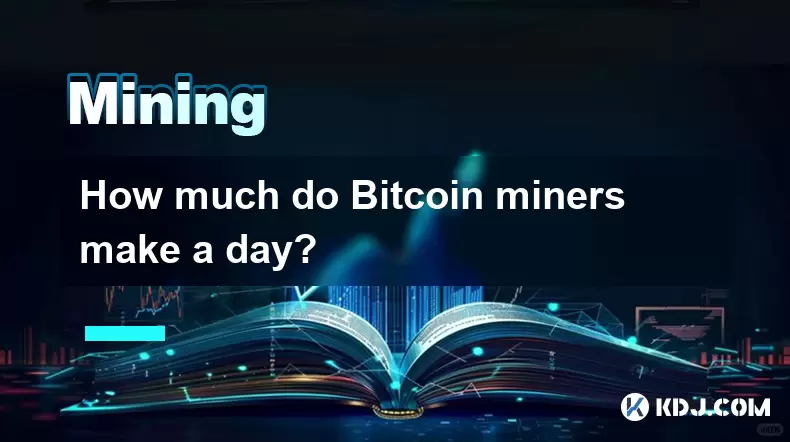-
 Bitcoin
Bitcoin $118,209.3536
1.16% -
 Ethereum
Ethereum $3,151.7546
5.98% -
 XRP
XRP $2.9277
2.35% -
 Tether USDt
Tether USDt $1.0000
0.00% -
 BNB
BNB $689.7099
1.26% -
 Solana
Solana $163.4270
1.91% -
 USDC
USDC $1.0000
0.02% -
 Dogecoin
Dogecoin $0.1983
3.74% -
 TRON
TRON $0.3008
0.51% -
 Cardano
Cardano $0.7435
2.86% -
 Hyperliquid
Hyperliquid $47.6547
-0.48% -
 Stellar
Stellar $0.4625
2.79% -
 Sui
Sui $3.9921
2.71% -
 Chainlink
Chainlink $16.0608
4.23% -
 Hedera
Hedera $0.2348
1.56% -
 Bitcoin Cash
Bitcoin Cash $496.6985
1.25% -
 Avalanche
Avalanche $21.9038
5.41% -
 UNUS SED LEO
UNUS SED LEO $8.8356
-1.88% -
 Shiba Inu
Shiba Inu $0.0...01364
5.31% -
 Toncoin
Toncoin $3.1102
4.35% -
 Litecoin
Litecoin $95.9756
3.59% -
 Polkadot
Polkadot $4.0925
5.78% -
 Monero
Monero $333.7622
-1.44% -
 Uniswap
Uniswap $9.1968
2.25% -
 Bitget Token
Bitget Token $4.6378
6.23% -
 Pepe
Pepe $0.0...01282
6.77% -
 Dai
Dai $1.0002
0.03% -
 Ethena USDe
Ethena USDe $1.0005
0.00% -
 Aave
Aave $329.9143
4.49% -
 Bittensor
Bittensor $441.4995
6.89%
How much do Bitcoin miners make a day?
Bitcoin mining verifies transactions and secures the network by solving complex puzzles with specialized hardware, rewarding miners with new BTC.
Jul 14, 2025 at 06:15 pm

What Is Bitcoin Mining?
Bitcoin mining is the process through which new Bitcoin transactions are verified and added to the blockchain, while simultaneously introducing new BTC into circulation. Miners use specialized hardware to solve complex cryptographic puzzles, and in return for their computational efforts, they are rewarded with newly minted Bitcoin. This decentralized system ensures that no single entity controls the entire network.
The core mechanism behind mining is called Proof of Work (PoW). In this system, miners compete to find a specific hash value that meets the difficulty criteria set by the Bitcoin protocol. The first miner to achieve this broadcasts the block to the network for validation. Once confirmed, the block is added to the blockchain, and the miner receives the block reward along with transaction fees from the included transactions.
Mining plays a crucial role in maintaining the security and integrity of the Bitcoin network. Without miners, there would be no way to confirm transactions or prevent double-spending.
How Does Bitcoin Mining Work?
At its core, Bitcoin mining involves solving a cryptographic puzzle using hashing algorithms. Each block contains a list of transactions, a timestamp, and a reference to the previous block's hash. Miners take this data and apply the SHA-256 algorithm repeatedly, changing a small piece of data called the nonce each time until they find a valid solution.
- A hash function takes input data and produces a fixed-size output.
- The goal is to find a hash that starts with a certain number of zeros, determined by the current network difficulty.
- When a miner finds such a hash, they broadcast it to the network.
- Other nodes verify the solution and accept the block if correct.
- The accepted block is then added to the blockchain, and the miner receives the block reward.
This process repeats approximately every 10 minutes. As more miners join the network, the difficulty adjusts automatically to maintain this interval.
What Hardware Is Used for Bitcoin Mining?
Initially, Bitcoin could be mined using standard CPUs and later GPUs. However, as the network grew, mining became increasingly competitive, leading to the development of Application-Specific Integrated Circuits (ASICs) — chips specifically designed for mining cryptocurrencies like Bitcoin.
Popular ASIC manufacturers include:
- Bitmain – Producer of Antminer series
- MicroBT – Known for WhatsMiner models
- Canaan Creative – Maker of AvalonMiner devices
These machines vary in hash rate (processing power) and energy efficiency, which directly affects profitability. Choosing the right hardware depends on factors like electricity cost, initial investment, and expected mining lifespan.
It’s also important to consider cooling systems and noise levels, as these machines operate continuously and generate significant heat and sound.
Is It Profitable to Mine Bitcoin Today?
Bitcoin mining today is far more capital-intensive than it was in the early days. Several variables influence whether mining will be profitable:
- Electricity costs: One of the most critical factors; lower energy prices significantly increase profit margins.
- Hardware efficiency: More efficient miners consume less electricity per hash, improving returns.
- Mining pool participation: Joining a mining pool can provide more consistent payouts compared to solo mining.
- Block rewards and halvings: Every four years, the block reward halves, reducing income unless offset by price increases.
To calculate potential profitability, miners often use online Bitcoin mining calculators, which take into account current BTC price, network hashrate, and power consumption.
In many cases, individual miners may struggle to turn a profit without access to cheap electricity and high-performance hardware.
How to Start Mining Bitcoin: Step-by-Step Guide
For those interested in entering the world of Bitcoin mining, here’s a detailed walkthrough:
- Choose mining hardware: Research and purchase an ASIC miner based on your budget and desired performance.
- Set up a mining wallet: Create a secure wallet to receive mining rewards. Options include hardware wallets, software wallets, or exchange wallets.
- Select a mining pool: Decide whether to mine solo or join a pool. Popular pools include F2Pool, Slush Pool, and Antpool.
- Download mining software: Install compatible mining software such as CGMiner, BFGMiner, or manufacturer-specific tools like BMMiner.
- Configure the software: Input your wallet address, mining pool URL, and worker credentials.
- Connect the hardware: Physically connect the miner to a power source and your network via Ethernet.
- Monitor performance: Use the miner’s dashboard to track hashrate, temperature, and earnings.
Ensure all components are functioning correctly before leaving the setup unattended for extended periods.
Frequently Asked Questions (FAQ)
Q1: Can I mine Bitcoin using my home computer?
No, modern Bitcoin mining requires specialized ASIC hardware. CPUs and GPUs are no longer viable due to the high difficulty and competition on the network.
Q2: What happens when all Bitcoin has been mined?
Once the maximum supply of 21 million BTC is reached, miners will rely solely on transaction fees for revenue instead of block rewards.
Q3: How much electricity does a Bitcoin miner use?
Power consumption varies by model, but high-end ASIC miners typically consume between 1,500 to 3,500 watts per hour.
Q4: Do I need internet connectivity for Bitcoin mining?
Yes, continuous internet access is required to communicate with the mining pool or the Bitcoin network.
Disclaimer:info@kdj.com
The information provided is not trading advice. kdj.com does not assume any responsibility for any investments made based on the information provided in this article. Cryptocurrencies are highly volatile and it is highly recommended that you invest with caution after thorough research!
If you believe that the content used on this website infringes your copyright, please contact us immediately (info@kdj.com) and we will delete it promptly.
- Animal Memecoins Roar Back: HEGE, BONK, and the Solana Pack Lead the Charge
- 2025-07-16 20:50:13
- Pumpfun's PUMP Token: SOL Transfers, Buybacks, and the Wild West of Meme Coins
- 2025-07-16 20:30:13
- Trump, HTX, and USDT: Riding the Crypto Wave in 2025
- 2025-07-16 20:50:13
- SPX6900, Meme Coins, and the Quest for 1000x Gains: A New Yorker's Take
- 2025-07-16 20:30:13
- Eclipse Airdrop and Token Supply: Navigating the Crypto Landscape
- 2025-07-16 18:50:13
- Solana Price, Zebec Network, and Remittix: Decoding the Crypto Signals
- 2025-07-16 18:30:13
Related knowledge

How are crypto mining profits taxed?
Jul 14,2025 at 12:28am
Understanding Cryptocurrency Mining and TaxationCryptocurrency mining involves validating transactions on a blockchain network and earning rewards in ...

How to keep a mining rig cool
Jul 12,2025 at 01:42pm
Understanding the Importance of Cooling in Mining RigsCryptocurrency mining is an intensive process that places heavy demand on hardware components, p...

How to mine crypto on a gaming PC
Jul 16,2025 at 12:00pm
What is Crypto Mining on a Gaming PC?Crypto mining involves using your computer's processing power to validate transactions on a blockchain network. A...

How to set up a crypto miner
Jul 16,2025 at 09:14am
Understanding Ethereum Gas Fees: What Are They and How Do They Work?Ethereum gas fees are a fundamental aspect of the network, representing the cost r...

Can you mine crypto on a laptop?
Jul 16,2025 at 02:21am
Is It Feasible to Mine Cryptocurrency on a Laptop?Mining cryptocurrency on a laptop is technically possible, but feasibility depends heavily on the ha...

Is crypto mining worth it?
Jul 16,2025 at 01:21am
Understanding the Basics of Crypto MiningCrypto mining refers to the process of validating transactions on a blockchain network by solving complex mat...

How are crypto mining profits taxed?
Jul 14,2025 at 12:28am
Understanding Cryptocurrency Mining and TaxationCryptocurrency mining involves validating transactions on a blockchain network and earning rewards in ...

How to keep a mining rig cool
Jul 12,2025 at 01:42pm
Understanding the Importance of Cooling in Mining RigsCryptocurrency mining is an intensive process that places heavy demand on hardware components, p...

How to mine crypto on a gaming PC
Jul 16,2025 at 12:00pm
What is Crypto Mining on a Gaming PC?Crypto mining involves using your computer's processing power to validate transactions on a blockchain network. A...

How to set up a crypto miner
Jul 16,2025 at 09:14am
Understanding Ethereum Gas Fees: What Are They and How Do They Work?Ethereum gas fees are a fundamental aspect of the network, representing the cost r...

Can you mine crypto on a laptop?
Jul 16,2025 at 02:21am
Is It Feasible to Mine Cryptocurrency on a Laptop?Mining cryptocurrency on a laptop is technically possible, but feasibility depends heavily on the ha...

Is crypto mining worth it?
Jul 16,2025 at 01:21am
Understanding the Basics of Crypto MiningCrypto mining refers to the process of validating transactions on a blockchain network by solving complex mat...
See all articles

























































































